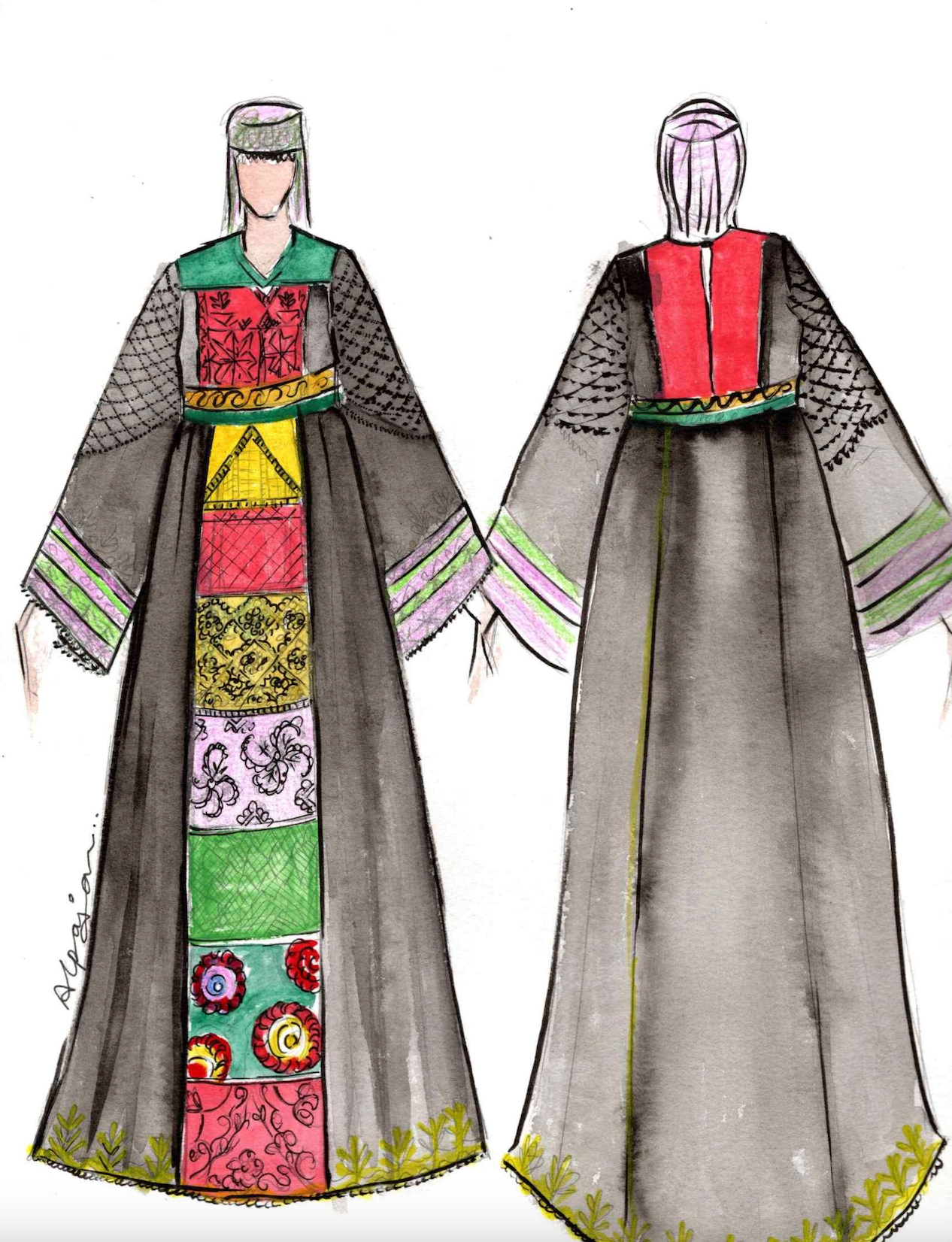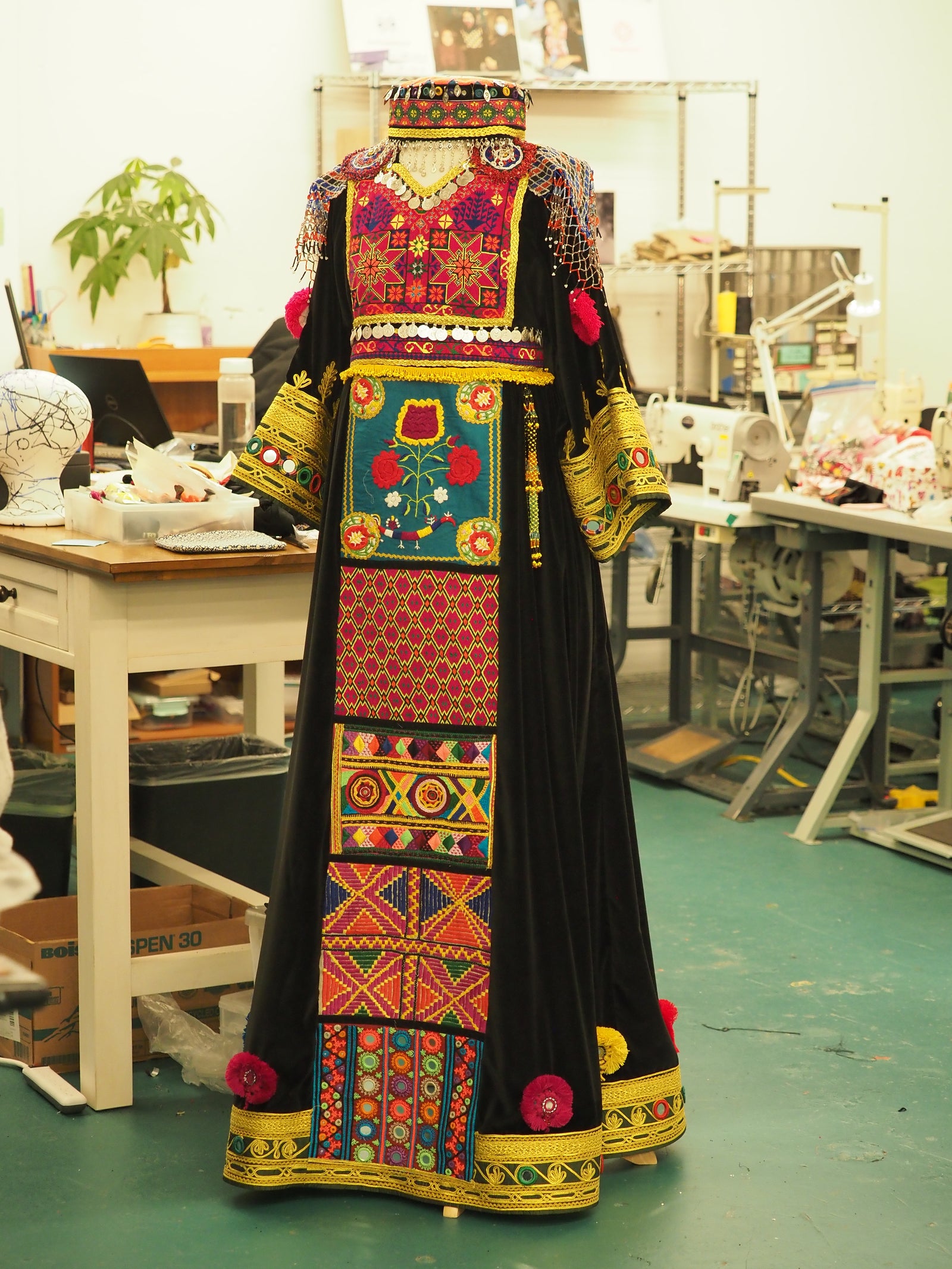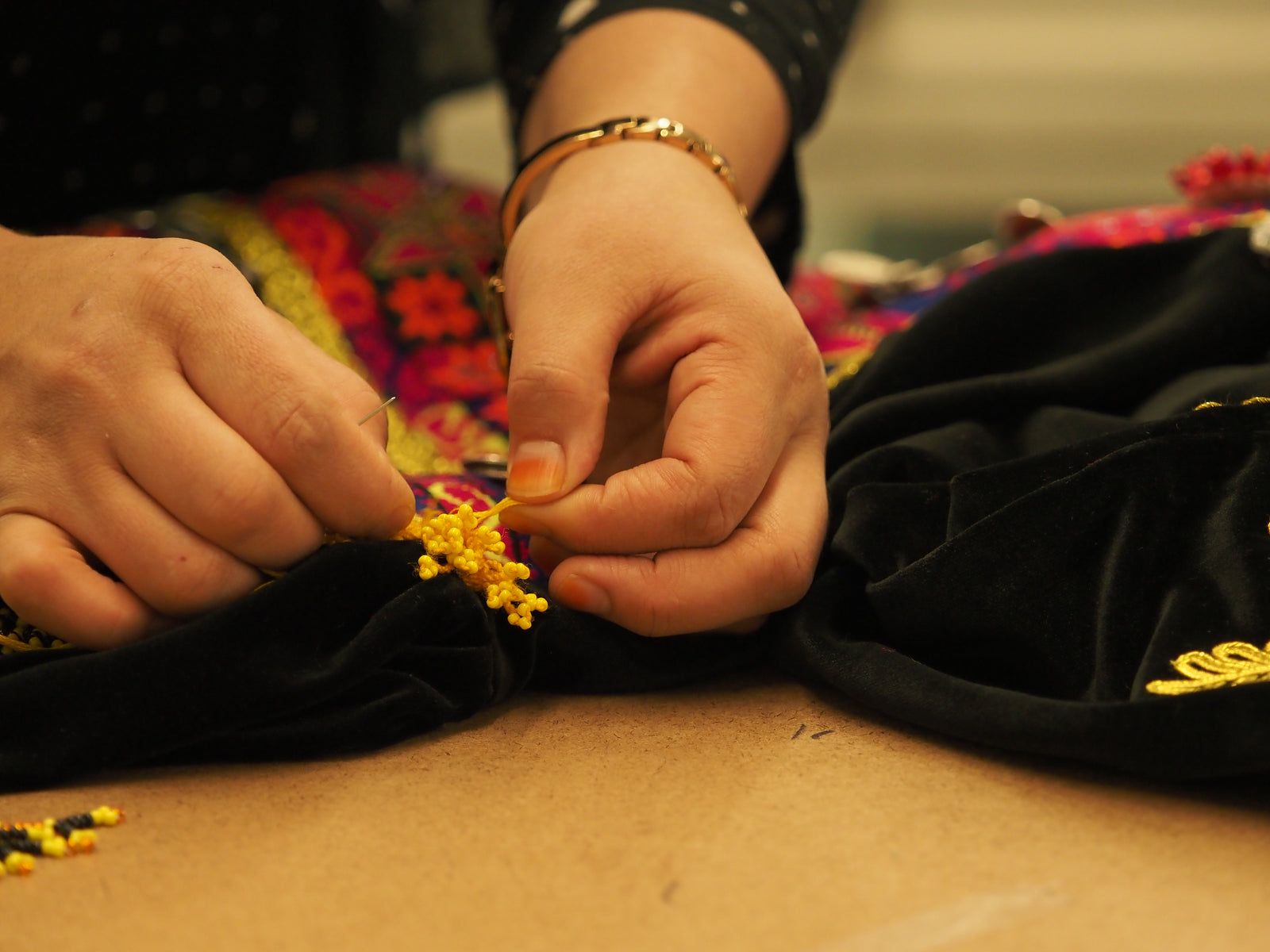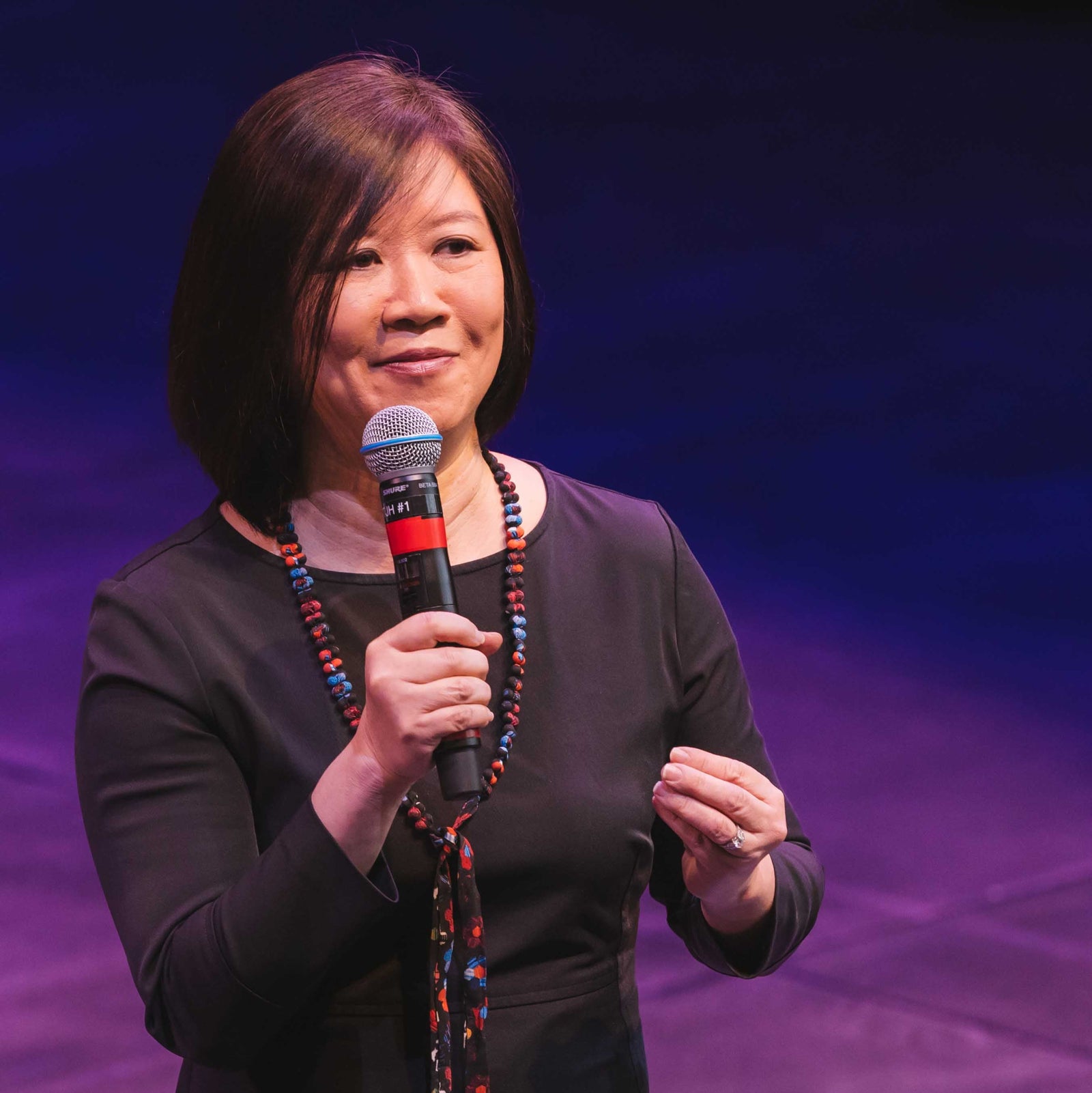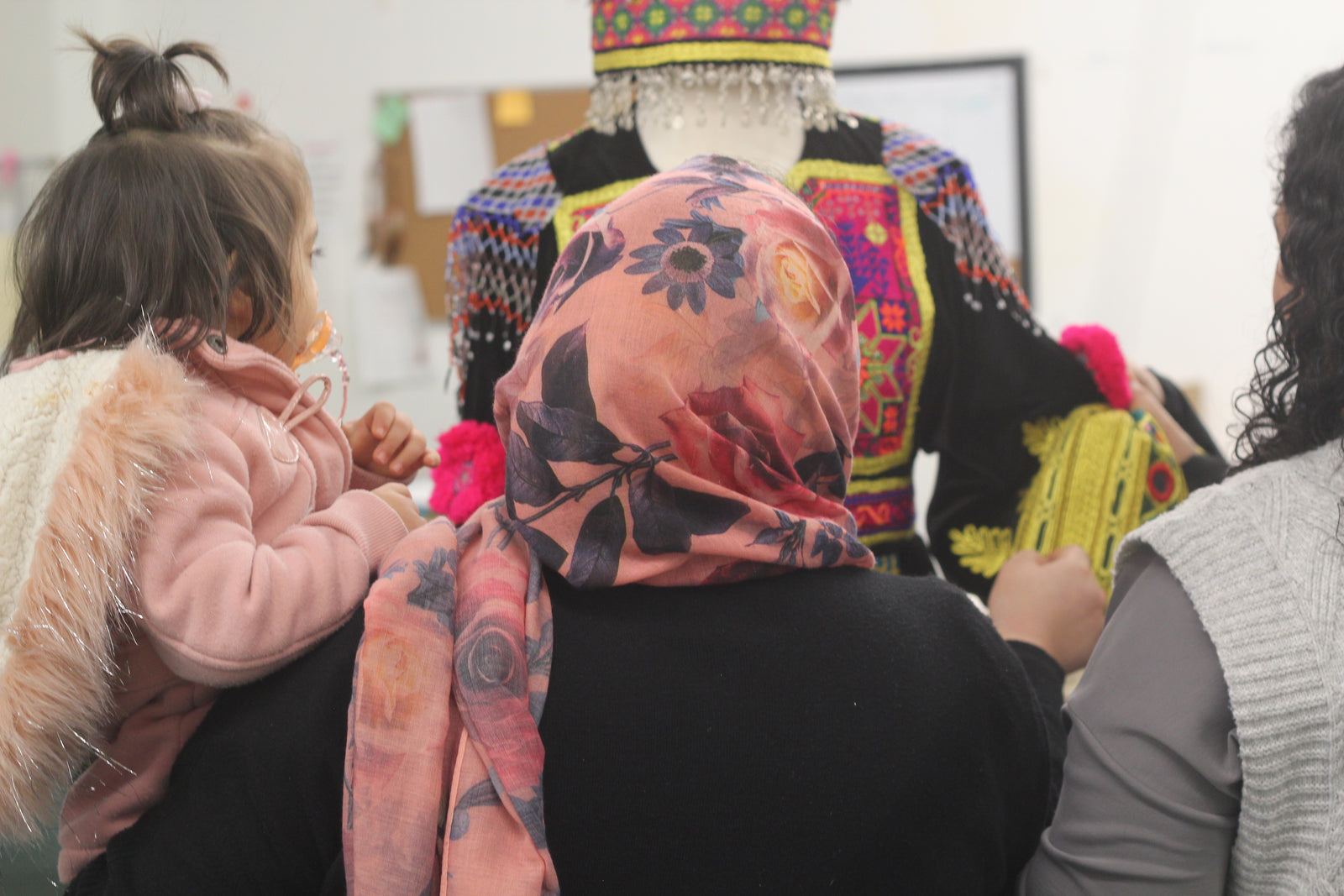Embroidery has long been the language of Afghan women—passed down through generations, carrying with it prayers, protection, and personal histories.
For the eight women who created the Kochiani Dress, each stitch represents more than beauty. It is survival. It is belonging. It is proof that even in new and unfamiliar places, culture travels with them.
By gathering together to create the gown, these women reclaimed the practice of embroidery as an act of community. Their work carries the voices of women who came before them, and inspires the generations to come.
Embroidery has long been the language of Afghan women—passed down through generations, carrying with it prayers, protection, and personal histories.
For the eight women who created the Kochiani Dress, each stitch represents more than beauty. It is survival. It is belonging. It is proof that even in new and unfamiliar places, culture travels with them.
By gathering together to create the gown, these women reclaimed the practice of embroidery as an act of community. Their work carries the voices of women who came before them, and inspires the generations to come.
Every region of Afghanistan tells its story through thread. The colors, symbols, and patterns reflect not just heritage, but also the landscapes and lives of the women who make them.
On the Kochiani Dress, you will find intricate embroidery that mirrors this diversity. Each piece reflects a part of Afghanistan’s identity—woven together to honor both the artisans’ shared culture and their unique experiences.
Every region of Afghanistan tells its story through thread. The colors, symbols, and patterns reflect not just heritage, but also the landscapes and lives of the women who make them.
On the Kochiani Dress, you will find intricate embroidery that mirrors this diversity. Each piece reflects a part of Afghanistan’s identity—woven together to honor both the artisans’ shared culture and their unique experiences.
The gown’s form takes inspiration from the traditional Kuchi dress, named after the nomadic people of Afghanistan. “Kuchi” itself means migration—a fitting tribute to the women who journeyed across borders to rebuild their lives in Seattle.
By combining a traditional silhouette with modern storytelling, the Kochiani Dress becomes more than a garment. It becomes a bridge between past and present, homeland and new beginnings.
The gown’s form takes inspiration from the traditional Kuchi dress, named after the nomadic people of Afghanistan. “Kuchi” itself means migration—a fitting tribute to the women who journeyed across borders to rebuild their lives in Seattle.
By combining a traditional silhouette with modern storytelling, the Kochiani Dress becomes more than a garment. It becomes a bridge between past and present, homeland and new beginnings.
The Kochiani Dress was inspired by RAI’s Executive Director, Ming-Ming Tung-Edelman, who envisioned a project that celebrated women’s resilience while uplifting refugee and immigrant voices. Modeled after the internationally acclaimed Red Dress Project, the Kochiani Dress was not created for the artisans, but with them—placing their skills, stories, and leadership at the center.
This collaboration reflects RAI’s belief that women’s artistry is a force for cultural preservation and economic empowerment.
The Kochiani Dress was inspired by RAI’s Executive Director, Ming-Ming Tung-Edelman, who envisioned a project that celebrated women’s resilience while uplifting refugee and immigrant voices. Modeled after the internationally acclaimed Red Dress Project, the Kochiani Dress was not created for the artisans, but with them—placing their skills, stories, and leadership at the center.
This collaboration reflects RAI’s belief that women’s artistry is a force for cultural preservation and economic empowerment.
The Kochiani Dress made its debut in partnership with Seattle Opera during its production of A Thousand Splendid Suns—an opera adaptation of Khaled Hosseini’s celebrated novel. In this context, the gown was more than a costume piece. It stood as a symbol of Afghan women’s voices, resilience, and creativity on a stage that reached thousands of new audiences.
The Kochiani Dress is only the beginning. Its story reflects Refugee Artisan Initiative’s broader mission: to create sustainable livelihoods for refugee and immigrant women while preserving the cultural traditions they carry with them.
Through projects like this, RAI connects artistry with opportunity, honoring heritage while building brighter futures.
The Kochiani Dress is only the beginning. Its story reflects Refugee Artisan Initiative’s broader mission: to create sustainable livelihoods for refugee and immigrant women while preserving the cultural traditions they carry with them.
Through projects like this, RAI connects artistry with opportunity, honoring heritage while building brighter futures.
This story of the Kochiani Dress was made possible with support from 4Culture.
